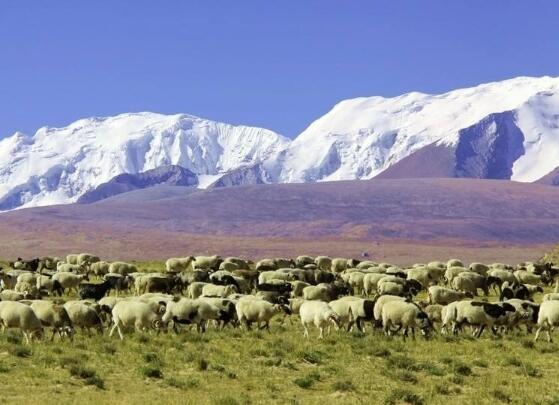
哪位英语高人帮忙翻译一下西汉南越王墓4导游词
At present, only unearthed in the corner of South King Palace, Palace of the group of less than 1%, yet the main part of his palace. Because it is now casual water unearthed only 22 meters, yet to see a higher level and the threshold, it is estimated that the North Hall of the wall on the 1st of more than 50 meters in length. Have information on, the early Han Dynasty in Xi'an长乐宫building from east to west前殿Zhangting 50, and up to 200 meters while未央宫. Based on current clues, hidden in the underground palace of South Vietnam should be a lot of blocks! And each are a group of buildings. South King Palace is based on the construction of the Western Han Chang'an, Chang'an town has未央宫,长乐宫, Mingguang Palace, Palace and other GUI palaces, and each function of the palace is not the same, is that the emperor未央宫leaders North Korea will群臣place, and it is the emperor长乐宫Empress office and bedroom. King had been unearthed in South Vietnam and India have a Chang'an Palace is the seal, and now I unearthed the Chang'an Palace Hall will do? According to the Western Han Chang'an city planning, city未央宫in the southwest, southeast长乐宫in the city, and Jianzhang Palace in the west outside the city.未央宫and are built in长乐宫Longshou high plateau on the ground, use of the topography of the parents to highlight the emperor and took control of the commanding heights of the city, in favor of cities and the emperor's own security. Han emperor Liu Bang长乐宫received in the initial朝贺when civil and military群臣proudly said: I do know that the noble king. One of the palace is now the site is the Yu Shan in ancient high ground, is located southeast of the city of赵佗side, the location and the location of the Western Han Dynasty长乐宫similar to the southeast side is the Royal Garden for royal leisure and recreational purposes. Therefore, I will be长乐宫Hall? Worth considering. Guangzhou municipal government has planned the construction site of the Department of the South Vietnamese museums Palais des Nations, it is estimated that more than 10 billion to spend. Only to the cost of the current has reached more than 500 million yuan, not including the cost of the relocation of house demolition. Mayor Lin said: The loss of land for construction of a few can be the loss of the value of heritage can not come with money count. Wealth left behind by our ancestors can not be defeated by the hands of our generation. 2, the Western Han Dynasty King Nanyue
哪位英语高人帮忙翻译一下西汉南越王墓5导游词
Western Han Dynasty is located in the liberation of South Road of King Kong as a hill, is the Kingdom of the Western Han Dynasty in the early years of second-generation South Vietnamese ignorant of the tomb of Zhao. Zhao Mei is the grandson of the more carry on the back, known as Wen, 137 BC to 122 years in office. Discovered in 1983, the archaeological finds in the line Xi Wen The Indian side as well as the chapter of Zhao Mei Indian jade, to prove the identity of the tomb owner. Level off hilltops for the hills South King, from Split Rock岗as 20 meters, carved a Plane convex竖character, from the front of the east and the west side of open hole horizontal ear into room, open up the south slope墓道. To the rock tomb replica soongorica sleep before the Church of the shapes after the underground structure, with 24 stone墓顶coverage, and then layered together to lay a solid foundation. Replica tomb built his residence, tomb ride south, a total of 7 d after the first three rooms, 12.5 meters wide, 10.85 meters long. Home owner in the back room, after the lobby of the Treasury, the former Department of things for the ear room for rear things侧室. From a total of 15 objects, of which 4 were姬妾, servant 7. Before the front room walls and roof are all decorated with ink and white satin cloud patterns; East Room is the banquets Appliances ears, there are bronze bells, stone chimes and mention extinguishers, Fang, Pei, such as wine and board, such as six-Bo; Room ears are weapons, vehicles, horses, armor, arrows, Goshiki Healing Stone and living supplies, possession of the treasures, in particular, precious银盒from the Persian, African ivory,漆盒, smoked and deep-blue glass furnace . These relics prove that the country of South Vietnam during the early or pre-Guangzhou with Persia and the east coast of Africa, there are sea-borne trade. The rear of the main room center, the main room for the owner of the tomb coffin, wearing a silk thread owner jade clothes, carry the seal 9, the largest one as a line Xi Wen Dragon Jinyin button, in addition to the tiger Varicorhinus button Indian Emperor , turtle button Yasuko golden chapter of Indian as well as the owner of the tomb, Zhao Mei India and other jade.姬妾possession of the eastern side of the room for room, object姬妾4 per capita and India have a wife. Easement on the west side of the room for the kitchen, the objects 7, no coffin, rear room of pigs, cattle, sheep三牲. Room after the possession of the Treasury for the storage of food, there are nearly a hundred pieces of large-scale copper, iron, ceramic cooking utensils and containers. A total of over a thousand pieces of archaeological finds (sets), the Indian is the first emperor of Han Dynasty unearthed in Jinyin. These archaeological finds in the study of Qin and Han Dynasties to work Lingnan development, production, culture, trade, construction, etc. as well as the history of South Vietnam and other countries are of great value. King of the South Vietnamese text unearthed, as the modern Chinese archaeologists found one of the top five freshmen. South Western Han Dynasty King museum has not opened up. Are on the mausoleum and some precious relics for more detail. [Large stone chamber tomb paintings] Large stone chamber tomb painting is a large stone chamber tomb of the Western Han Dynasty, is the owner of the tomb on behalf of the South Vietnamese country's second king, Zhao Mei (赵佗the Sun), more than 2,000 years ago. In 1983, in the liberation of North Hill Gang as a site of this tomb was found in depth of 20 meters underground, with more than 750 building blocks of sandstone boulders. The tomb of an area of about 100 square meters, hours before and after the two parts, a total of seven rooms. Before the middle room, rooms are painted on all sides and at the top have Chinese, Mexican and white moire pattern, a symbol of朝堂. Residual slope墓道long 10.46 meters, width 2.36 - 2.59 meters.墓内before and after the two parts, each with one pairs of Shihmen fan. King is the Lingnan region of South Vietnam discovered the largest and most diverse archaeological finds, in his capacity as owner of the tomb were the highest specifications of a tomb is found in China so far during the first large stone chamber tomb mural painting. The underground tomb of treasure can be a total of unearthed cultural relics of various kinds of more than 1000 pieces (sets), the connotation of a very rich, particularly in copper, iron, pottery, jade the largest share of the four. And line Xi Wen The archaeological excavations in China and India are found for the first time the Emperor in India Yuxi, the most valuable. King of the South Vietnamese found that their social, historical, cultural and scientific value of the land has not only shocked the Lingnan, and alerted the country, the world-famous, from the archaeological community, the community to the media, are surprising. Some evaluation of this is the countless people struggling to explore the 2000 years of secrecy, China's archaeological history of the discovery of one of the most glorious.'s Tomb of the baby was described as: Treasures from the brilliant, golden, sparkling silver Jade is the most, Biyu treasure, rare treasure, Han-yu must of valuable goods, there are many rare, first, only, unique absolutely fine, can not be replaced and the top rating. Xinhua News Agency as the broadcast and the People's Daily published articles and other media, the whole world is a strong feeling that the Chinese ancient culture of the Lingnan region of the shock, at the same time, but also stimulate people to search for the tomb of赵佗hope seems lost exposed
哪位英语高人帮忙翻译一下西汉南越王墓3导游词
In 1997 the city Department of Cultural Affairs in the original plans for the construction of 51 foreign compound layer Sindh Cultural Square. 3-5 meters underground palace found in the entire Department of Royal Garden meandering stone Shiqu, 150 meters long, 4000 square meters has been excavated, is an artificial water garden. Shiqu tortuous, from west to east, drainage density Shop at the end of black gravel. Tung Tau have a meniscus-shaped stone pool, pool found the wreckage of hundreds of turtles, that it was raising the pond turtles, turtles may bepreference, so long life.sodu have stone steps and stone, even outside the. Shiqu bending for which there are two limits of the drainage water and water blocking weirs, so as to form and sparkling blue water. Shiqu iron in there and leaves,Gyoen visible fruit and flowers are planted. Royal Garden can imagine all bridges, fruit fragrance, flowers, flowers, turtles reptiles, fish Xiang shallow end of a very elegant leisure, one Lingnan garden landscape scenery. Shiqu connect a large reservoir of water, and dark wooden trough exports to the Pearl River drainage, and maintain continuous flow all the year round. Royal Garden song Drainage Design Science, building sophisticated, full of fun, is an ancient landscape architecture landscape quality, to achieve a fairly high level. Royal Garden at the site of a total of seven times the overlap layer and found that the Qin, the South Vietnamese country, the Eastern Han Dynasty, Jin Dynasty, Southern Dynasties, Tang, Song period relic sites. Also found that all 83 wells during the period, During the country from South Vietnam to the Republic of China, and Doi, brick wells, tile wells, wooden wells, ring wells and pottery bamboo ring wells, reflecting the different cultural characteristics of the construction period. It is interesting to note that in particular gossip brick wells, eight vertical line block cross between brick brick, into the eight trigrams of the form, we can see that the ancients had to understand the principle of rigid mechanical structure, the building is indeed a very high technical level of wells.Ancient Chinese wooden architecture are building, orbuilding, where the ancient city like Rome, built of stone knot in the ruins of the Qin and Han Dynasty in China is unique, does the Panyu has been building technology into the West? Of course, there will be the ground or wood construction, but only out of South Vietnam when the Western Han Dynasty set fire to it. Qu bending and drainage flow, separated by Jing Jing, small and, to the natural landscape in the courtyard between the microfilm, is a typical feature of the Oriental garden; completely different from the Western landscape with geometric symmetry box, made exhaustive list of garden-style (such as France Chateau de Versailles). We believe thatThis stone is like building Rome, technologies, and combined with the Oriental style of gardening is that the South Vietnamese Royal Garden Palais des Nations Department of the National first character of the most prominent examples.[South Vietnamese country palace ruins]The center of the palace is in the early 2000 archaeologists discovered about 500 square meters of the palace site on the 1st, where we can clearly see the two former South Vietnam in 2000 the palace of the King casual water in the Tang Dynasty 1,300 years ago paving the corridor , 1000 4 years ago, the South Han Palace stone plinth pier foundation trench, as well as the structure of various types of construction sites. Bottom line we can see that there are cobbled rocks. According to the archaeological director of the Institute of Chinese Academy of Social Sciences, the ancient palace-chu Liu archaeologists study presented here, which is usually gravel with Shop in the ancient palace of the ground under the eaves, rainwater is used to access the casual water.Structure of the Han Dynasty to gravel for the casual water is a class limit, if the ground around the palace roof were covered with casual water is a standard Palace, shops on both sides is the only criteria Wang. From this site, the north and east of the palace have paved the gravel casual water, in accordance with the laws of China Construction symmetry, has not yet been unearthed in the west and south should also be paved with. In other words, this palace is the palace of South Vietnam in accordance with the construction of the Han. From the size, it may be the office of the local South Vietnamese Wang.believe that the palace must have more than one hall, there are similar Hall of Supreme Harmony in Beijing, China and the Middle Temple, Paul and Hall do? 30 years from his palace by the archaeologicalInspection to determine, and now unearthed a large hall, the south will no longer have a hall, it is estimated that more should be in the area west of the palace.
导游词作文 500字 南京
游吧,一路游来,江南的美景游了不少,美食也品了不少,美女呢,也见过不少。
大家开心我也开心。
不过肯定还有不少的遗憾,江南的美景太多了,不可能在这短短的几天就全部看到,我所能做的就是带大家欣赏更多的美景,多了解这里的风土人情文物特产。
也许有的人还有机会再来,也许有的人可能再没有机会来了,一路上大家对我的工作都很支持,我很感谢,让我们一起抛开遗憾,收藏美丽
快到南京了,说起南京带给我的感受,可谓爱恨交加。
为什么呢
听我慢慢道来。
在南京呆过一年半载的人,都知道,夏天像个大火炉,那个热呀,恨不得苍蝇蚊子都能中暑;冬天像个大冰窖,那个冷呀,好像睡觉也会冻翘翘。
三言两语难以表达我的讨厌。
为什么会这样呢
就要说到它的地势了。
听听诸葛孔明怎么说的。
在赤壁之战前,诸葛亮应孙权之约,下江南共商抗曹大计,骑着小毛驴,摇着鹅毛扇,考察建邺后(今南京),说“钟山龙蟠,石城虎踞,此乃帝王之宅也。
”也就是说,在南京,东有绵延起伏的钟山,像一条盘龙;西有巍然的石头城屹立于大江之滨,像一只猛虎蹲踞着,这一切暗合古时传统的好风水:左青龙,右白虎,后人简称为“虎踞龙蟠”。
大山小山整把南京围了个圈儿,只有北边缺了个口儿。
造物主偏爱南京,又送给她什么
长江,对了。
古人没翅膀,没大桥,没飞机,没大炮,敌人只能望江兴叹。
所以嘛,封建帝王想:“南京好,美景多,美人娇,躺在里面睡大觉”。
更关键的是,南京有个凝聚了金陵王气的宝物,就是貔貅,南京的市徽。
它是上古的神兽,英勇善战而且招财进宝、驱邪消灾。
大家要记得带个回去哟,是个好东西。
于是乎,11个朝代在南京这个大摇篮中,上演了你方唱罢,我方登场的历史剧。
想当年,蒋家王朝也曾妄想据长江天险二分天下。
哪十一家,有你家吗
我们游客中有姓孙的,姓朱的吗
东吴,东晋,宋齐梁陈,南唐,明初,太平天国,中华民国有几家了
十。
还有一家,哪去了
再加上南唐前的“杨--徐政权”。
杨指杨行密、徐指徐温,南唐始建政权者是徐温的养子---徐知诰,也即唐烈祖李昪。
从去年年底始,南京已被定格为十一朝古都,还说十朝古都的,以后可没说当初导游没讲过呀。
南京深得帝王宠爱,可总是红颜薄命。
因为兵家必争之地,自然会血雨腥风。
改朝换代就像小孩子搭积木一样,不满意,推翻再重来;牺牲的将士就像朱元璋手中捏的鸡,死了还有鸭子替代;从天子到臣子到小卒子最后到凡夫俗子的坟墓就像路上的红绿灯一样,没两步就亮起来。
不好,不能讲了,要不然大家夜里睡不着找我唠磕,怎办
不好意思,少说点,就打对折,就说近几百年的吧。
明朝。
葬朱元璋马皇后的明孝陵,已被列入联合国教科文组织的世界遗产名录。
提到朱元璋,不能不提长35.267公里的明城墙,这个数据是最新的,用美国佬的军用卫星测量出来的。
当年朱元璋采纳谋士的“高筑墙,广积粮,缓称王”的建议,借沈万三的聚宝盆修筑了固若金汤的城墙。
如今以中华门城堡最雄伟,也是保存得最好。
如果有机会,登临中华门,我们既可领略明城墙的雄伟坚固,又可以回味书上报上口头上的种种历史传说,还可以幻想种种可能的结果。
当年,为了不按约定在五更鸡叫时还聚宝盆,朱元璋下令杀光全城的鸡。
从此,南京没有鸡子,就吃鸭子了。
南京的板盐、盐水鸭,皮白肉粉骨头绿,极具地方特色。
至于其中详细故事过会一一道来。
为了江山社稷安稳,朱元璋建城墙;为了集中政权,树立朱氏子孙的威信,朱元璋比“杯酒释兵权”的赵匡胤更狠毒,造了一座功臣楼。
皇上的心计只有刘伯温一人知晓,就装病告老还乡,临行前到中山王徐达府上——瞻园。
忘了,这园子是朱元璋亲自在泱泱金陵挑选的宝地,建成豪华的王府作为自己当初的吴王府,后来登基作了皇帝,送给徐达的。
军师悄悄说:“楼成摆庆功宴时,你要紧追皇上,寸步不离。
切记切记。
兄弟过此别过”。
结果,除徐达外,其它功臣元老都随一声炮响而无影无踪。
究竟徐达在朱元璋心目中是何等地位,晚上我们瞻园里的江南美美自然会告诉我们的,白天时间比较紧张,我们还要去—— 清朝。
南京遭到的罪孽与扬州相比较少,康熙赞朱元璋“治隆唐宋”,就是夸他功劳高过唐太宗和宋太祖。
为什么
得民心者得天下。
南京是明都遗都,反清复明的首领都集聚于此,清朝要国泰民安,想让鱼米之乡的江南搞好农业生产,就得收拢人心。
康熙甚至拜明孝陵,乾坤六下江南也有这原因。
所以,南京的清朝的孤魂野鬼较少。
怕人呀。
太平天国。
清军镇压,无数军兵死于战乱。
天王洪秀全本葬在荣光大殿下,后曾国荃令士兵掘墓、鞭尸、焚烧,最终真可谓灰飞烟灭。
想想生前贵为万人之上的天子,死后连安身之地都没有。
人生在此,在好好享受每一天的同时,再想想还有什么地方没去的,什么景点没玩的,什么好吃的没尝的,什么漂亮的没买的。
短短人生几十年,少太了,我还要向苍天再借五百年,唉呀,那不成了老不死的了吗。
扯远了。
在当年烧成废墟的天王宫殿上建两江总督府,后又扩建为总统府。
人们常说,北有故宫,南有总统府。
故宫是封建文化的最高代表,体现了帝王之风;总统府是中外文化碰撞的火花,中西合璧。
二者有相似之处,但也有截然不同的地方,帝王由故宫走向金銮殿,却从总统府走向坟墓。
如今总统府是中国最大的近代史遗址博物馆。
到南京不去总统府就等于去北京不去故宫一样,白来一趟。
广东中山市中文导游考试口语有那几篇导游词
求已考考生解答
口试部分(导游服务能力)中文考生涵盖“语言技巧”、“景点知识”、“常规服务”、“应变知识”、“个性展示”五个科目。
外语类考生除以上五个科目外,增加“中外互译”、“短文复述”两科。
(1)语言技巧:语言的准确性、逻辑性、严谨性,普通话的语音、语调、语速以及表情运用等。
(2)景点知识:对景点知识的掌握及导游讲解的艺术。
(3)常规服务:对导游服务程序与标准的掌握,以及运用能力。
(4)应变知识:旅游活动中特殊事故的预防、处理的规范要求。
(5)个性展示:导游在接团过程中应具备的满足游客需要,调动游客情绪,个性突出,才艺俱佳的表现能力。
(6)中外互译:导游讲解过程中现场翻译能力和听力水平。
(7)短文复述:通过现场随机抽取短文进行复述,考察考生对外语的理解与运用能力。
从本次考试开始,口试考试内容改为:景点增加至八个,取消市景点;导游规范、应变能力题目各增加一题,具体要求和分值详见考试指南。
3.本次口试指定景点: (1)中文景点: 南海西樵山、越秀公园、新会圭峰山风景区、西汉南越王墓、鼎湖庆云寺、阳春凌霄岩、连州地下河、南澳岛(八个景点根据抽签考其中1个)。
(2)英语、日语景点:广东概况(必考);越秀公园、鼎湖庆云寺、新会圭峰山风景区、西汉南越王墓(四个景点根据抽签考其中1个)。
(3)本次小语种口试指定景点:广东概况(必考);中山纪念堂、陈家祠、世界地质公园—丹霞山、开平碉楼与立园(考生抽签取其中一个景点进行讲解) (二)考试分数计算:笔试“导游综合知识”(上、下午成绩合计)满分800分,合格分为480分;口试“导游服务能力”满分200分,合格分为120分;加考笔试“广东导游基础知识”满分220分,合格分为132分。
新考生必须笔试和口试同时合格才能通过考试,加考考生加考科目合格即可通过考试。
新考考生的笔试或口试成绩合格,下一次报考只需加考尚未合格的科目。
(三)口试“导游服务能力”在2014年10月15日至11月14日之间完成(每位考生考试时间为30分钟)。
各口试点须在2014年8月20日前上报考务有关工作计划,并在口试结束后第二天报送口试资料。
(四)准考证领取办法。
考生可在2014年9月10日起登录报名网页账号,点击“打印准考证”,按《考试须知》要求打印准考证(毁坏、遗失准考证的可再次打印)。
帮我写一篇山西太行山大峡谷的导游词1000字左右谢谢
位于壶关县东部的晋豫两省交界区,北距壶关县城30公里,位置优越,交通便利。
公园涉及三个乡镇的23个村,占地面积达4389.4公顷,其中林木面积3287.6公顷,森林覆盖率高达74.9%。
公园风光旖旎,和人文景观资源十分丰富。
规划以五指峡、龙泉峡、五莽峡三大峡谷为主线,开辟紫团洞、云盖寺、水妖洞和真泽宫四大景区。
共有峡景、水景、山景、石景、树景、林景和名胜古迹景观44处,景点400余个。
有绿浪滔天的林海,刀削斧劈的悬崖,千姿百态的山石,如练似银的瀑布,碧波荡漾的深潭,雄奇壮丽的庙宇,引人入胜的溶洞,令人神往的传说。
景点有实有虚,有明有暗,有光有色,有奇有险,巧夺天工,使公园的和人文景观珠联壁合,相映成趣。
公园的景点主要集中在紫团山上。
山距壶关县城东南60公里,因山有紫气缭绕成团而得名。
山区突兀,。
古称抱犊,风光绝佳,有“南五夷(山),北抱牍(山)”之说,是“海内不可多得”之胜境。
历史上有颂扬它的诗词百余篇及36景诗传世。
主要有八大景色:仙翁崖、云盖寺、照壁山、倚秀峰、南参园、唐崖碑、将军峰、翠微洞和白龙潭。
云盖寺在山巅,亦称白云寺,有南向的二进院佛寺建筑,大殿斗拱层叠,木质透雕,尤以4组戏剧砖雕而著称。
紫微洞亦称紫团洞,是紫微道人面壁之处。
洞如迷宫,宽窄不等,最高处达50余米,最宽处达30余米,最低窄处则仅容一人侧身而入。
洞中有“天神”、“罗汉”、“八仙过海”、“玉龙捧寿”等溶岩层景点151处,已开发1500米,接待各方宾客。
真泽宫景区以真泽宫为中心,位在紫团山区树掌镇神郊村。
宫内供奉着乐氏二仙女,又称“二仙奶奶庙”、“二圣庙”。
宫外红墙碧瓦,巍峨庄严,内部雕梁画栋,结构巧妙,占地7000平方米,依山筑砌成五进院落,一院高于一院。
有香道、牌坊、山门、当央殿、万寿亭、钟鼓楼、寝宫、圣公母大殿及两侧的楼阁式配殿,有阳宫、阴宫、婴儿宫、奶水宫、梳妆楼等,使整个建筑统一在古朴典雅、高低错落的环境之中。
太行山峡谷,古有“藏龙卧虎之地”的美称。
不久太行峡谷森林公园,将以“返璞归真”的氛围展现在世人面前,为游人赞赏、青睐。
太行山绵延千里,象一条青色的巨龙,盘踞在河南、山西、河北三省辽阔的大地上。
位于林州市西部的一段被称为南太行林虑山。
闻名于世的“人工天河”——红旗渠,就构筑在磊山的悬崖峭壁中。
因此,该风景区定名为“红旗渠·林虑山风景名胜区”。
这里是国家级风景浼胜区,也是“亚州第一,世界一流”的滑翔基地。
主要景区面积有100平方公里。
我国锦乡山河素有“北雄南秀”之称,而林虑山是北雄风光最胜处。
林虑山属暖温带半湿润,它的最高山峰海拔1675米,形成独特的山区气候特征。
年平均降雨量670毫米左右。
四季分明,光照充足,春暖少雨,秋凉气爽,平均气温12.7。
C。
林虑山历史悠久,汇独特的与人文景观于一体,景区内有省级以上文物保护单位10处,市县级以上文物保护单位71处,旅游资源丰厚。
从南北朝时期起,这里就已成为众所瞩目的旅游胜地。
这里曾留下了历代帝王将相、达官贤士、文豪武侠、名流高僧、神医巧匠的足迹,也有他们美丽而神奇的传说故事。
商朝第22代国王,省年时被其父送往王相岩与平民奴隶生活在一起,在此结识了奴隶,发现其很有才华,他即位后三年不语,方把朝臣说服,请出山并拜为宰相,而得辅佐,实现了中国历史上的“殷道复兴”。
东汉时期,朝中官宦夏馥迫于皇宫之祸,陷姓埋名避难于此,现遗迹尚存。
明嘉靖年间游方道人赵得秀居山不舍,依崖筑景,苦练仙丹,现仍存其师徒墓塔。
景区气势磅礴,风光独秀。
经过近几年的开发建设,形成了以“人工天河”红旗渠、、太行之魂王相岩、冬夏倒置桃花谷、、天开图画黄华山、文物宝谷洪谷山、北雄风光天平山、翠柏园林龙凤山、石门涌泉万泉山、龙洞天桥王龙洞等景观为主体的独具特色的风景名胜区。
本书重点介绍风光。
北起林州市任村镇回山角,南至山西省平顺县井底村,南北长30公里,东西宽200米,最窄处60米。
群山环绕,山峦重迭,奇峰突兀,台壁交错,形态万千,森林覆盖,郁郁葱葱,青山流水,,景色“雄、险、奇、秀”。
站在高处眺望,抬头是景,低头是景,左看是景,右看是景,景色迷人。
主要景区有:山前景区、王相岩景区、仙台山景区、桃花谷景区、太行平湖景区、林虑山国际滑翔基地等。
那三九冰雪桃花开的桃花谷和三伏酷暑洞结冰的冬夏倒置奇观,更是令游人神秘莫测、赞口不绝。
太行大峡谷丰富的自然景观和人文景观吸引着四方游客。
每年接待观光野营、休疗养生、滑翔攀岩等大批游客。
现在北京、河南、上海、广州等多家电视台、电影制片厂来此作外境地,拍摄电视、电影片,著名的电影片《李双双》和电视剧《难忘岁月——红旗渠故事》等就是在这里拍摄的。
每年迎来大批美术院校师生,来此写生作画,创作出了无数优秀美术作品。
咏太行大峡谷高空吊桥凌空横跨危崖半,极目凭栏忘胆寒。
树绿峰青鸟蹈舞,天蓝云白水安澜。
司马迁导游词150字
司马迁祠墓始建于公元310年,距今己有1600多年的历史。
祠墓是为了纪念世界文化名人,我国西汉时期伟大的史学家、文学家、思想家司马迁而修建的。
祠墓依山就势,建于4个平台之上,占地l04亩。
1982年,国务院公布为全国重点文物保护单位。
大家面前的这个门额“汉太史司马迁墓”大匾,是大书法家启功先生的墨迹。
这条古道全用石条铺成,上面有车轮碾轧、风雨侵蚀的痕迹,凸凹不平,是一个千年古道。
春秋时期,韩、赵、魏三家分晋之前,韩城属于晋国。
分晋之后,韩城就属魏国的“西河之地”了。
魏国在这里建了个少梁城,为了开通少梁与河西各地的交通,便在前面这个土崖上开凿了这条大道。
韩城是西周武王的封地,名曰“韩侯国”,因此这条道被称为“韩奕坡”。
“奕”即大的意思,是指这条道是韩城最宽、最长、最古老的一条道。
后来,司马迁祠修建在其北侧,韩城当地人也称其为“司马坡”、“司马古道”。
在韩城流传着一句俗语:“下了司马坡,秀才比驴多”,赞誉韩城地灵人杰,出人才,文人多。
古道最早为土坡,为了防止下雨路泥车滑,北宋时铺砌了石条。
石条上清晰的车辙说明历史上这里交通的繁忙。
古道最早修有3里多地,现保留完整的只剩下300余米。
古道通上去与108国道接壤,可以说它是108国道的前身,800多年前的高速路。
请大家看这座木制牌楼上面的“高山仰止”四个字。
《诗经》上有“高山仰止,景行行止”的诗句。
司马迁在写《史记·孔子世家》时,用这句话赞誉孔子,把这4个字用到这里,也是赞誉司马迁品德高尚,德高如山,世人景仰。
现在大家踏上的这条砖石小道,俗称 “朝神道”。
1668年,韩城县令翟世琪率领芝川民众大规模扩建司马祠,在司马坡上架了一座天桥,把南原的土运到司马祠前,垫起了祠台堂基。
在堂基前方,把有数丈深的沟填平,筑了这条上祠之道——朝神道。
朝神道修得非常有特点,中间低,两边高,晴天作为人行道,下雨天是排水道,一路两用。
前面这些台阶有99级。
为什么要筑99级台阶呢
古人对于不同的数字赋予不同的意义。
古称九为数之极,九九则是至高无上了。
修99级台阶用以比喻司马迁历尽千辛万苦,在史学和文学方面取得了很高成就,有九九归一的意思。
台阶中间这一砖砌牌坊,上书 “河山之阳”。
《史记·太史公自序》中说:“迁生龙门,耕牧于河山之阳。
”这就是其出处。
牌坊两侧的这一副对联是:“圣人光道统,汉史竟经文。
”现在请大家环顾四周。
东边,黄河滔滔,涤荡胸中滞气;西边,梁山苍苍,畜积天人灵光;南边,魏长城蜿蜒作围墙;北边,芝秀河潺潺作腰带。
一派俊秀河山!祠院大门上“太史祠”这3个字,是韩城县令王增琪在清光绪十二年 (1886年)题写的,字迹端庄雄健。
司马祠院是整个司马迁词墓的主体建筑。
祠院由献殿和寝宫组成。
献殿是司马迁后裔祭祖的地方,中间这一石桌是供桌,用来放置供品;桌面刻有琴棋书画和二龙戏珠图案。
献殿的对联上联是:刚直不阿留得正气凌霄汉;下联是:幽而发愤著成信史照尘寰。
横批是:“文史祖宗”。
现在,对司马迁其人及经历作一简单介绍:司马迁,天资聪颖,10岁就能诵读古书。
少年时期在家乡一面读书,一面进行耕牧活动。
19岁跟随父亲到了京城长安,拜孔安国学习《尚书》,拜董仲舒学习《春秋》。
20岁时,在父亲司马谈安排下,游历祖国的名山大川。
他北到九原 (内蒙古包头),南到九嶷山,东到浙江绍兴,西到甘肃崆峒山。
长途跋山涉水,收集历史传闻,考察地理环境,探究民俗风情,为撰写 《史记》积累了丰富的素材。
23岁做了郎中,即皇帝侍卫官,任务是守护宫廷,保护皇上。
公元前110年,司马迁36岁时,父亲司马谈跟随汉武帝到泰山封禅,途中病逝于洛阳。
临终嘱托,要完成 《太史公书》。
公元前108年,司马迁38岁,他继承父亲的职务担任了太史令。
太史令是文官,地位不高,却是皇帝的近臣,负责记载国家大事,记录王侯将相的言行,起草皇帝的诏令,掌管天文、礼仪,制定历法。
是皇帝的顾问。
公元前104年,司马迁与天文历法家邓平、唐都、落下闳等合作,制定了“太初历”。
“太初历”推算19年有7个闰月,完备了二十四节气,对农业生产起到了重要的指导作用。
这一年,司马迁修订了父亲的著作,决定上起黄帝,上至太初,著作 《太史公书》。
司马迁著述的《史记》是我国第一部纪传体通史,堪称我国历史学的奠基之作。
《史记》不仅记录了古代社会的多个方面,而且叙事简约生动,文笔华美。
鲁迅先生曾赞誉 《史记》为“史家之绝唱,无韵之离骚”。
“文史祖宗”这个牌匾是1946年二月初八,司马迁生日那天,芝川镇徐村人敬献的。
还有这两边柱子上立的木刻对联,也是他们1981年敬献的。
那么,为什么单单徐村人为司马迁敬献牌匣呢
在汉朝,宫刑与杀头属同一个级别,满门抄斩,株连九族是其规定。
司马迁后裔为了躲避这场灾难,纷纷逃离家园。
跑到芝川附近的深山,改名换姓,过起了隐居的生活。
他们把司马两字分开,“司”加一竖为“同”,“马”加两点为 “冯”,在新的住所以同、冯为姓了。
司马二门人以徐为姓,暗示余下二门人。
因此,现在的同、冯、徐三姓都是司马后裔。
徐村有一个药王庙,牌坊上写着 “法王行宫”4个字,当地人解读,这4个字反着念就是 “宫行王法”,隐喻“宫刑枉法”,司马迁的后人就是用这样的方式纪念自己的祖先,倾诉着对于祖先遭受不公待遇的愤怒。
这是寝宫,修建于1125年,距今有800多年的历史,保存得非常完整。
“文革”期间也没有遭到破坏。
重要的原因是在《为人民服务》中引用了司马迁的一句话:“人固有一死,或重于泰山,或轻于鸿毛。
”所以就保存下来了。
寝宫正中这个暖阁里,就是司马迁的彩色泥塑像。
像高140厘米,身着太史红袍,手握竹简,面朝北望。
司马迁面部略微朝北,当地流传着这样的说法:“北望李陵,怀念苏武。
”李陵的情况才已向大家介绍了。
那苏武的情况怎样呢?苏武也是司马迁的挚友同僚,汉武帝派他出使西域诸国,被匈奴扣留,遣送到北海牧羊,19年后才回到长安。
司马迁虽忍辱度生,心中还是思念着这两位老友,然而他至死也没有看到他们。
这儿是司马迁的墓冢。
北魏地理学家郦道元在 《水经注》中记叙了他考察司马迁祠墓的所见所闻,书中是这样记载的“墓前有庙,庙前有碑。
西晋永嘉四年,汉阳太守殷济,瞻仰遗文,大其公德,遂建石室,立碑树柏。
”从那时到现在,司马迁墓已有1600多年的历史了。
现在看到的类似蒙古包的墓冢,传说是元世祖忽必烈在1275年敕命建造的,迄今也有720多年了。
墓冢上镶嵌八卦砖雕,比较少见。
八卦是文字产生之前占卜者用来传达神灵意愿的神秘符号,后周文王诠释其意,才有 《易经》。
以后八卦被道家、兵家、阴阳家所使用,成为中国社会一种囊括一切的哲学体系。
据《易经》所载,八卦的原意是“以通神明之德,以类万物之情”,有研究天地万物变化规律之意。
而司马迁著述 《史记》的宗旨是 “究天人之际,通古今之变”,将《易经》的基本理论应用到撰史中来,也可以说是对 《易经》理论的实践和发展。
这大概就是镶嵌八卦符号的用意吧!墓顶这一古柏,分为五枝,人称 “五子登科”。
墓地植柏,是希望逝者英灵如同柏树一样万古长青;命以“五子登科”的美名,是寄寓子孙后代考中状元,多出人才。
墓前的“汉太史司马公墓碑”,是陕西巡抚毕沅1776年题写的。
司马迁祠中,有很多碑文。
最早一通是宋代太常博士韩城县知事李奎题写的。
碑上有这样几何话:“一言遭显戮,将奈汉君何
”“为览遗文来一奠,不知何在子长灵?”这通碑是中国现代杰出的史学家、诗人、政治活动家郭沫若先生的题词:“龙门有灵秀,钟毓人中龙,学殖空前富,文章旷代雄。
怜才磨斧钺,吐气作霓虹。
功业追尼父,千秋太史公。
”对司马迁做了很高评价,也是评价司马迁的千古绝唱。
其他的碑多是功德碑、纪事碑。
2005年是司马迁诞辰2150周年,韩城举办了“风追司马”大型活动。
这是新中国成立以来最大规模的一次纪念司马迁的活动,活动共分三个会场,分别在司马迁祠、太史公文庙和徐村举行。
国内诸多专家名人出席了此次纪念活动。
来自西安各个大学的上千名学子进行长跑签名活动,以此表示对司马迁的尊敬。
这次活动也吸引了大量来自全国各地司马迁的后裔及司马迁的崇拜者近2万。



